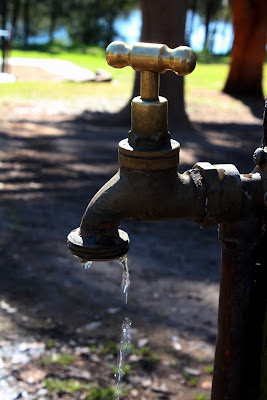Today I went out for 2nd round of shooting with my Canon 650D and again it was a bright sunny day. But this time I knew (bit more) about how to control exposure when shooting in bright sunlight.
Last time it was also a bright sunny day and many photos were over-exposed when I checked them after transferring to my laptop. Then I did some research and read some articles about shooting under a bright sunlight and that’s why this time I was better prepared to shoot in similar conditions. I loved the control a dslr provides you with. It feels great when you decide how you expose your image to the light or how much light you want the camera to allow to enter through the lens to develop a perfect photo.
Despite the Sunny 16 rule, I found that it is you who decides on the spot that what settings suit the scene that you are trying to capture how your camera settings are actually capturing it. There is no one fixed setting for each scene (the combination of light, object, background, movement etc.) that you want to shoot rather you can achieve the same (or similar) result for the same scene with different combination of settings. For example if Sunny 16 rule states that at an Aperture value of 16, you can shoot with perfect exposure if you set the shutter speed to inverse of the given ISO value i.e. if ISO is set to 100 then your shutter speed should be 1/100 (or close to it). I believe that the same result can be achieved by changing all those values. At least I tried it with different combination of Av, Tv and ISO and I can confirm the photo was perfectly exposed as the output was almost as I saw it through the lens or even without it.
As I said, I believe these rules are there to help you with basic settings/combinations of Aperture/Shutter/ISO but in the end it is up to the photographer that how he uses these settings/combinations to get the best photo out of his camera. (I may be wrong as I’m no expert but this is what seems to be working for me – so far).
Below are few images that I took with different settings that shows how different combination produce an altogether different image. I took all these photos at ISO 100 and camera program was set to Manual Exposure i.e. fully manual mode.
An over-exposed image: Av 8.0 & Tv 1/125

A properly exposed image: Av 8.0 & Tv 1/320

Another over-exposed image with Av 8.0 & Tv 1/40

Same image with slightly different Shutter Speed. Av 8.0 & Tv 1/50

At an Av of 8.0 and Tv of 1/100, the sky colour is shaded with the bright sunlight and tree branches are not as vivid as it actually were

Change the Shutter speed and look at the difference below.

I used to own a point and shoot digital camera earlier (that I still have but not using anymore) but since I’ve bought a dslr, I am extremely happy with the investment as it does give the kind of control that allow you to shoot the image as you see or want. You only have to know how to use the given controls and settings on the camera.
Having said that, I am not claiming that I’ve learned all or have become an expert over-night. All I am saying is, I am very excited to have my new toy and it pays back to spend some time into learning what your ‘toy’ can do for you 
Happy Shooting !!!



















